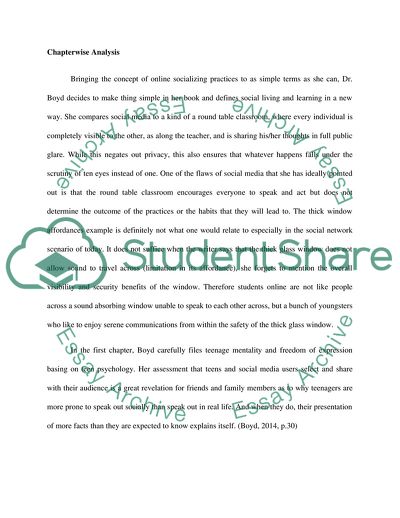Cite this document
(Danah Boyds Book on Social Lives of Networked Teens Report/Review Example | Topics and Well Written Essays - 1250 words, n.d.)
Danah Boyds Book on Social Lives of Networked Teens Report/Review Example | Topics and Well Written Essays - 1250 words. https://studentshare.org/sociology/1832624-analytic-essay
Danah Boyds Book on Social Lives of Networked Teens Report/Review Example | Topics and Well Written Essays - 1250 words. https://studentshare.org/sociology/1832624-analytic-essay
(Danah Boyds Book on Social Lives of Networked Teens Report/Review Example | Topics and Well Written Essays - 1250 Words)
Danah Boyds Book on Social Lives of Networked Teens Report/Review Example | Topics and Well Written Essays - 1250 Words. https://studentshare.org/sociology/1832624-analytic-essay.
Danah Boyds Book on Social Lives of Networked Teens Report/Review Example | Topics and Well Written Essays - 1250 Words. https://studentshare.org/sociology/1832624-analytic-essay.
“Danah Boyds Book on Social Lives of Networked Teens Report/Review Example | Topics and Well Written Essays - 1250 Words”. https://studentshare.org/sociology/1832624-analytic-essay.


